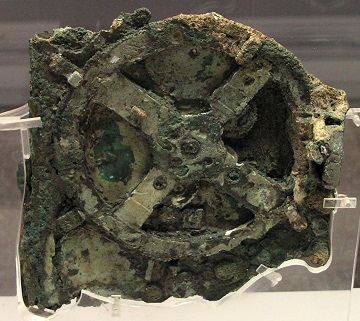380815-Antikythera.jpg

A fragment of the Antikythera mechanism Credit: Marsyas, GNU Free Documentation License
More than 2,000 years ago, a Roman ship was headed home with an amazing array of treasures when it sank off a Greek island. Today, scientists are exploring the wreck with an amazing array of technologies — including the “Iron Man” of the deep.
The wreck is named for the island of Antikythera. It was discovered in 1901 by sponge divers. An early expedition spent weeks scouring the site, more than 150 feet down. Among other goodies, they found statues of Heracles and Apollo, and a device that’s considered the world’s first analog computer. The artifacts suggested the ship sank between 60 and 70 B.C.
In 2012, scientists from the U.S. and Greece began mapping the site and cataloging its remaining treasures. They recovered a giant spear that probably was part of a statue.
And in 2015, they began a five-year project to study the site in detail. They’re using many of the tools of modern marine science to do so, including robotic submersibles.
Debris from the wreck lies at depths of up to 500 feet — too deep for scuba divers. So the project is using a device called Exosuit. The 500-pound metallic suit is like a high-tech version of the rigid diving suits of decades past. It can support a diver for up to two days, at normal atmospheric pressure, so there’s no need for decompression. It has maneuvering thrusters, a high-def video camera, and fixtures for grabbing objects. So the diver inside the suit becomes a sort of aquatic Iron Man — exploring an ancient shipwreck.

